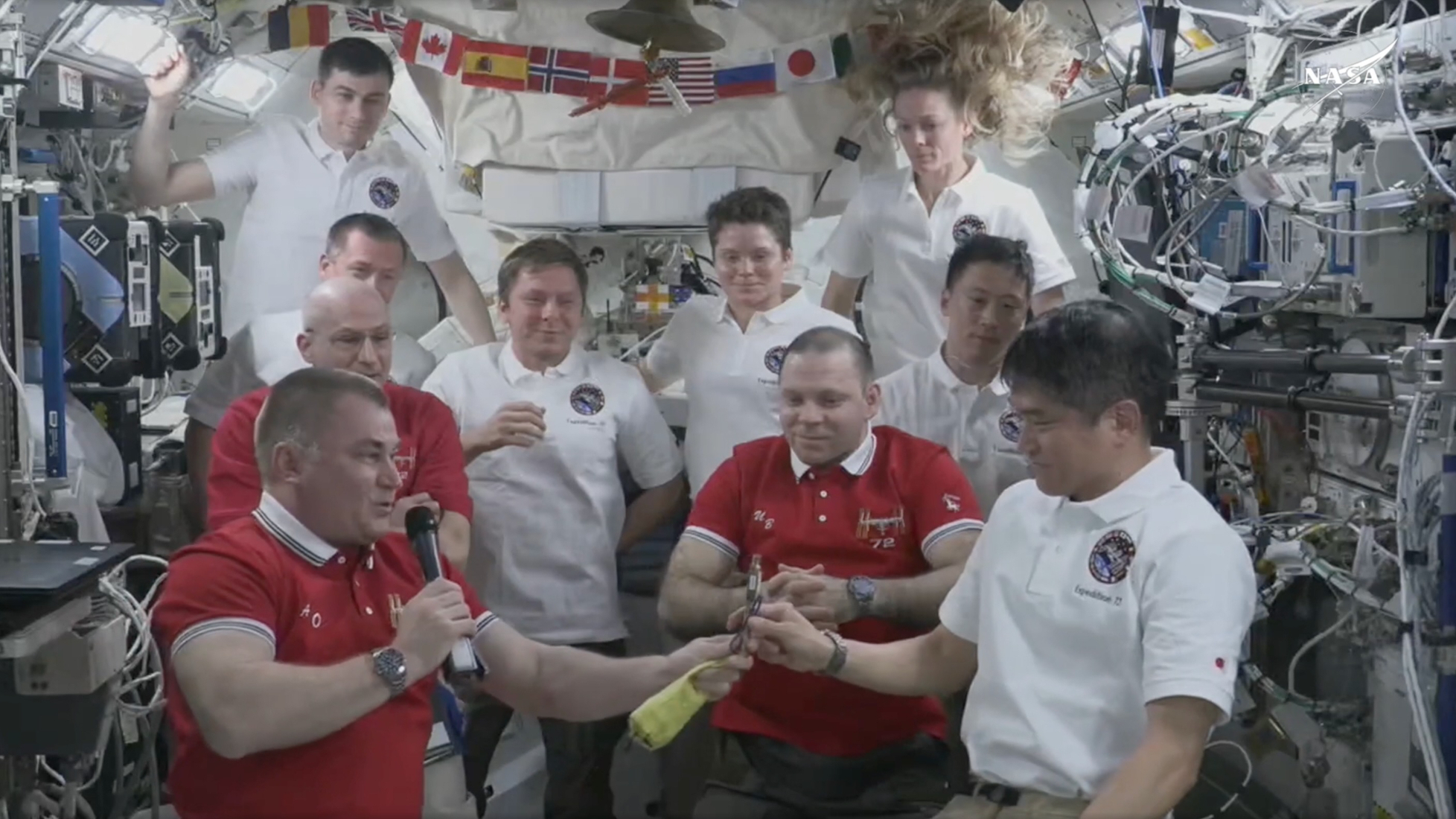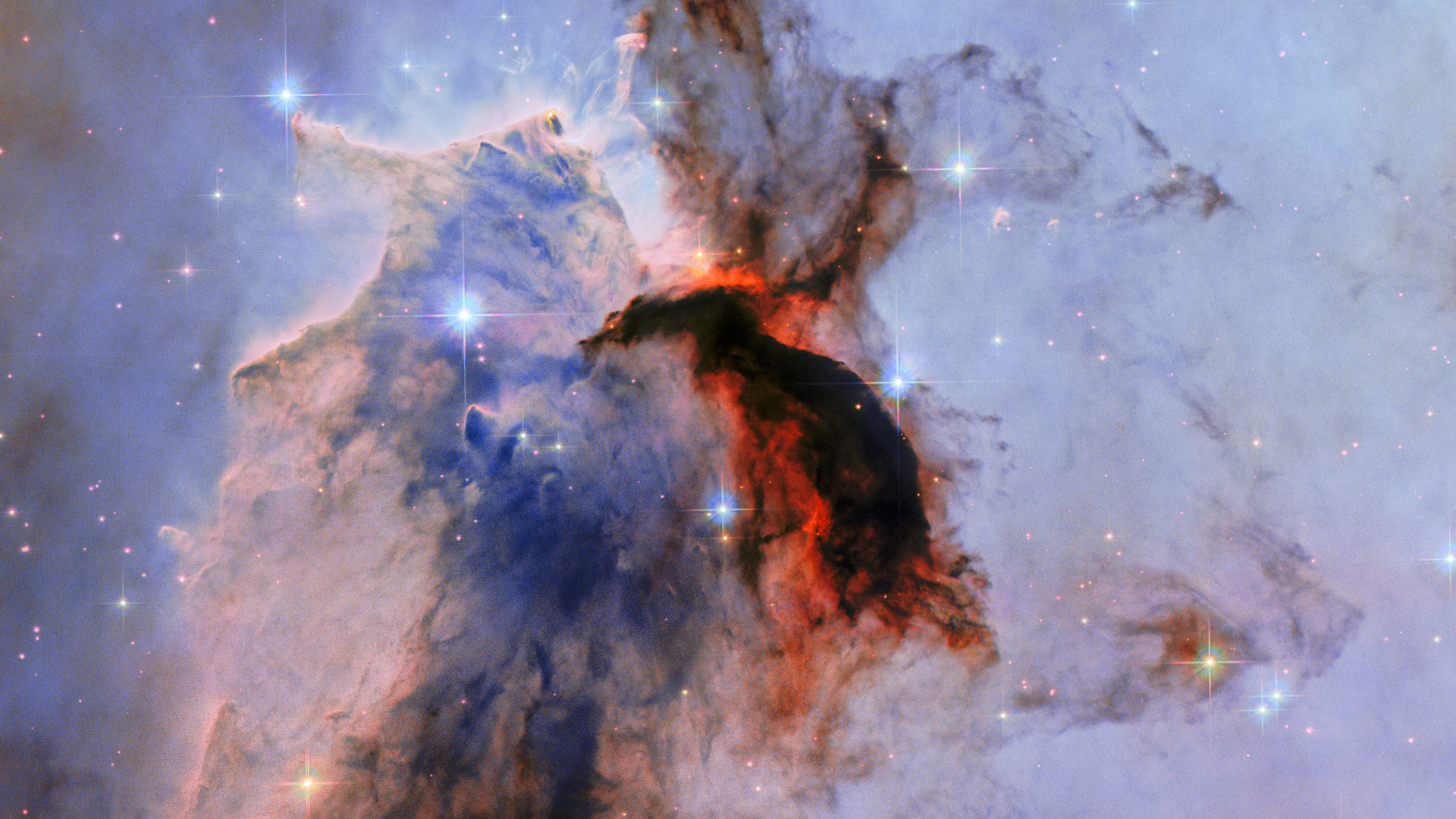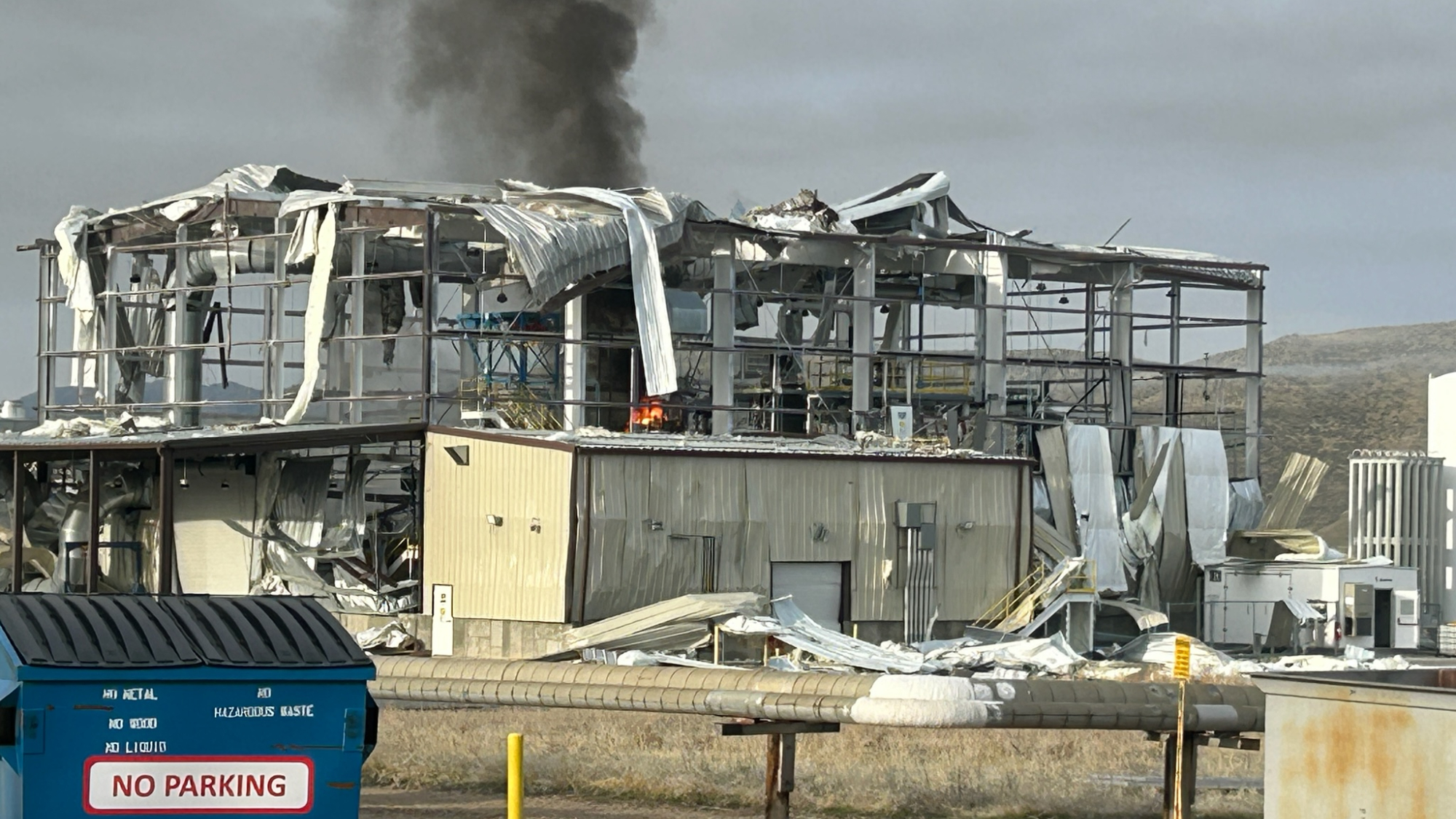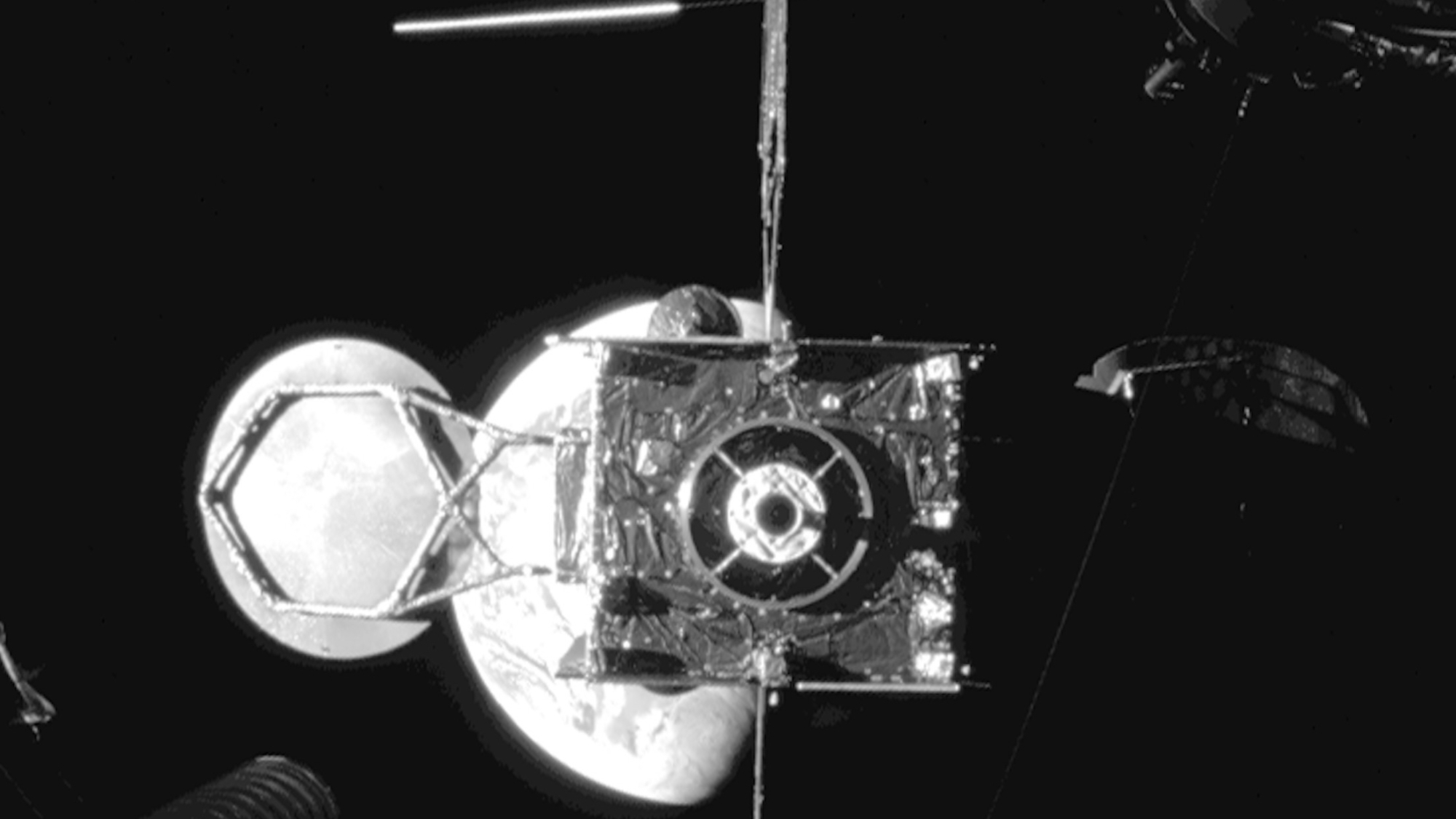NASA begins delivering 1st Artemis Moon Trees to be planted across United States
The trees began as seeds flown around the moon on NASA's uncrewed Artemis 1 mission in 2022.
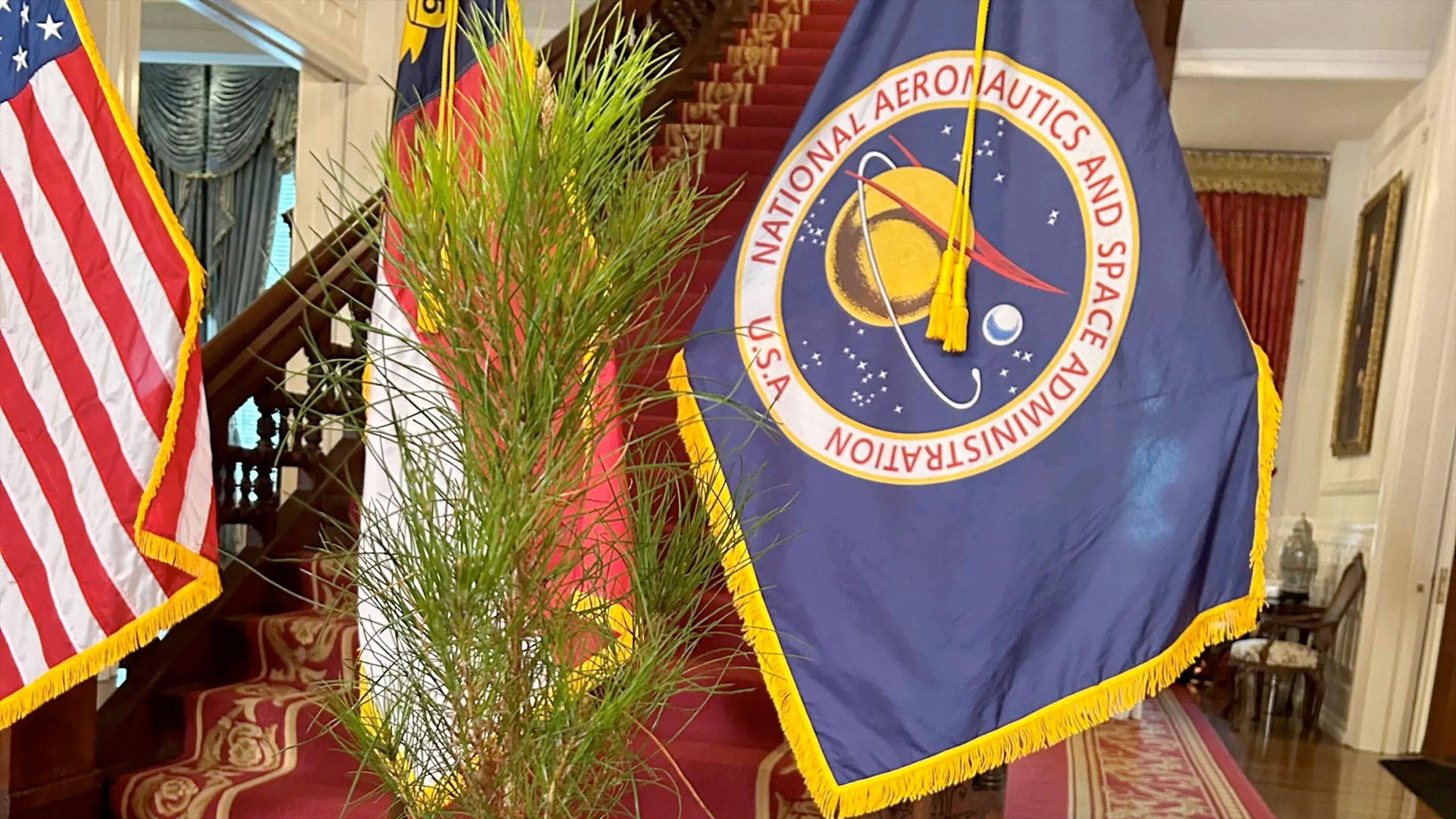
The first woman slated to launch to the moon has delivered one of the first trees grown from seeds recently flown there.
NASA astronaut Christina Koch presented a loblolly pine "Moon Tree" sapling to her home state of North Carolina on Wednesday (April 24). The tree began as one of more than 1,000 seeds that were flown around the moon on NASA's uncrewed Artemis 1 mission in 2022.
"With the planting of an Artemis Moon Tree today at the governor's mansion, North Carolina is firmly planting the roots of exploration for generations to come," said Koch, who is targeted to launch in late 2025 as a member of the Artemis 2 crew.
Koch's presentation marked one of the first deliveries to a new generation of Moon Tree stewards, whom NASA has selected from across the country. Koch's alma mater, White Oak High School in Jacksonville, North Carolina, is another of the chosen recipients.
"I used to dream about going to space by looking up through the pine trees, and so, it was just a really great symbol of our commitment to North Carolina, North Carolina's commitment back to NASA, and all the amazing universities here that produce people for the aerospace industry," said Koch according to The Daily News, the local newspaper in Jacksonville. "That whole Artemis generation that's coming up here and that we can't wait to see exploring space."
Related: NASA's Artemis program: Everything you need to know

In addition to the loblolly pines, which are native to North Carolina, the Orion spacecraft that flew on Artemis 1 also carried sycamore, sweetgum, Douglas-fir and giant sequoia seeds on its 270,000-mile (435,000 kilometers), 25-day journey. Back on Earth, the U.S. Department of Agriculture's Forest Service oversaw that the seeds germinated and grew into seedlings for their distribution as Artemis Moon Trees.
In August 2023, NASA put out a call for interested educational and community organizations to apply to grow a Moon Tree. The space agency chose recipients based on their ability to care for the various tree species and their position to use the tree's growth as an outreach tool in their neighborhoods, cities or states.
"Together, NASA and the Forest Service will deliver a piece of science history to communities across our nation," said Mike Kincaid, associate administrator of NASA's Office of STEM (science, engineering technology and math) engagement. "Through this partnership, future explorers, scientists and environmentalists will have the opportunity to nurture and be inspired by these Artemis artifacts in the community where they live, work and learn."
NASA is notifying the selected institutions in waves, with the first now underway, followed by groups in the fall of this year, spring 2025 and fall 2025. The agency plans to keep a record of the recipients on its website, noting the species of tree they received and their planting cycle.
Moon Tree hosts will also be invited to engage with the public at quarterly virtual gatherings beginning this summer.
A full list of the first, almost 50 recipients has yet to be made public, but according to a social media post, Mary Chapa Academy in Greenfield, California received a sapling on Thursday (April 25).
The idea for the Artemis 1 Moon Trees was grown out of a similar project carried out by Apollo 14 command module pilot Stuart Roosa, who as a former Forest Service smoke jumper launched with hundreds of tree seeds in his personal preference kit on the 1971 moon mission.
The Apollo Moon Tree seedlings were planted across the U.S., with many becoming part of the country's bicentennial celebration in 1976.
"A new era of Moon trees will one day stand tall in communities across America," said Bill Nelson, NASA's administrator. "NASA is bringing the spirit of exploration back down to Earth because space belongs to everyone. The Artemis Generation will carry forth these seedlings that will be fertile ground for creativity, inspiration, and discovery for years to come."
Follow collectSPACE.com on Facebook and on Twitter at @collectSPACE. Copyright 2024 collectSPACE.com. All rights reserved.
Get the Space.com Newsletter
Breaking space news, the latest updates on rocket launches, skywatching events and more!
Join our Space Forums to keep talking space on the latest missions, night sky and more! And if you have a news tip, correction or comment, let us know at: community@space.com.

Robert Pearlman is a space historian, journalist and the founder and editor of collectSPACE.com, a daily news publication and community devoted to space history with a particular focus on how and where space exploration intersects with pop culture. Pearlman is also a contributing writer for Space.com and co-author of "Space Stations: The Art, Science, and Reality of Working in Space” published by Smithsonian Books in 2018.In 2009, he was inducted into the U.S. Space Camp Hall of Fame in Huntsville, Alabama. In 2021, he was honored by the American Astronautical Society with the Ordway Award for Sustained Excellence in Spaceflight History. In 2023, the National Space Club Florida Committee recognized Pearlman with the Kolcum News and Communications Award for excellence in telling the space story along the Space Coast and throughout the world.



